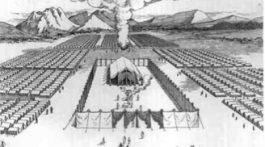Some time ago I started a series on “Bridging the Gap between ‘Us’ and ‘Them.'” When you build a bridge of any length, you have to drive piers down into the bedrock to provide a stable foundation. You cannot support a stable bridge on mud, or on shifting sands. You must go deep enough to hit something solid.
In three previous blogs, I identified three layers of bedrock on which a healthy relationship — a healthy bridge between individuals — must be founded. The bottom, most important, most stable layer of bedrock is recognizing that each individual is Precious. The next layer recognizes that each individual is Unique. The third layer is the recognition that each individual is Capable. A way to remember this is to make a simple diagram of the three layers, like this:
______
C
______
U
______
P
______
Notice that the three layers, assembled in order, spell the word “Cup.” Only when the cup is complete — or, if you prefer, when the cup is filled — does one have the basis for solid foundation, and the opportunity for building a stable bridge, a healthy relationship, between “us,” and “them.”
The several things to note about this. First of all, any foundation based merely upon capability, only penetrating to the first level of bedrock, will ultimately become unstable and fail. In terms of a bridge, this means that a portion of the bridge will be lost; in terms of her relationship, it means that the relationship will become either manipulative or abusive. In an upcoming chapter we will talk about those two attributes.
The reason that a relationship founded on Capability will necessarily come to grief is that capability changes over time. An infant is capable of very little; the same may well be true of an elderly person. If our relationship with that person is based on capability alone, then when they have no capability, we will have no relationship worthy of the name.
Likewise, a relationship based upon their Uniqueness will fail at the most critical juncture, when one or the other ceases — even for a short time — to fully express the uniqueness. “Oh, you’re just like the others!” One might say. But, as indicated is precisely this point where the support of a healthy relationship — of a good friend or mentor — is most needed. The main reason we failed to express our uniqueness is fear that our performance — that is, our behavior, or perceived capability — will cause others to devalue us. Uniqueness, by definition, means “different.” Peer groups, whether in school, church, or society at large, generally ridicule or marginalize those who are different.
And so we see that if the foundation of a bridge — a relationship — penetrates only the first two layers, it will fail. Only when we realize for ourselves, and express to others that each of us is Precious, that we are of infinite value, and that nothing we do can increase or decrease that value — only then will we be free to fully express our Uniqueness, and maximize our Capability.
If we value the other person only for their capability, then when they capability falters, we will no longer value them. That either leads us to manipulate them — seeing that their only value to us is in what they can do for us — or will lead them to attempt to ingratiate themselves with us by doing things we value, to inflict pain upon us because our devaluing of them causes them pain, or to terminate the relationship entirely in order to avoid the pain. The bridge falls, the relationship fails.
Likewise, if we value them for their uniqueness, for the ways they are different than other people, then when they behave in ways similar to others — which we all do, sometimes necessarily, and sometimes because we fear to express our uniqueness fully — we will either attempt to get them to behave in bizarre ways, ways which are different but not positively so, or will lead them to behave in such ways in an attempt to maintain our attention–to keep the bridge open if you will. In that case to, the bridge falls, the relationship fails.
Only a relationship which drills all the way down to an individual’s inherent value can keep both parties safe, can keep the bridge open, and the relationship healthy.
But note that it is a bridge: the recognition of precious, unique, and capable attributes must go both ways. If it does not, one party is using the other, or both are in a continual competition for the upper hand. In such a case, the bridge appears to still stand, but it has become a barrier to healthy relationship, rather than an avenue to one.









